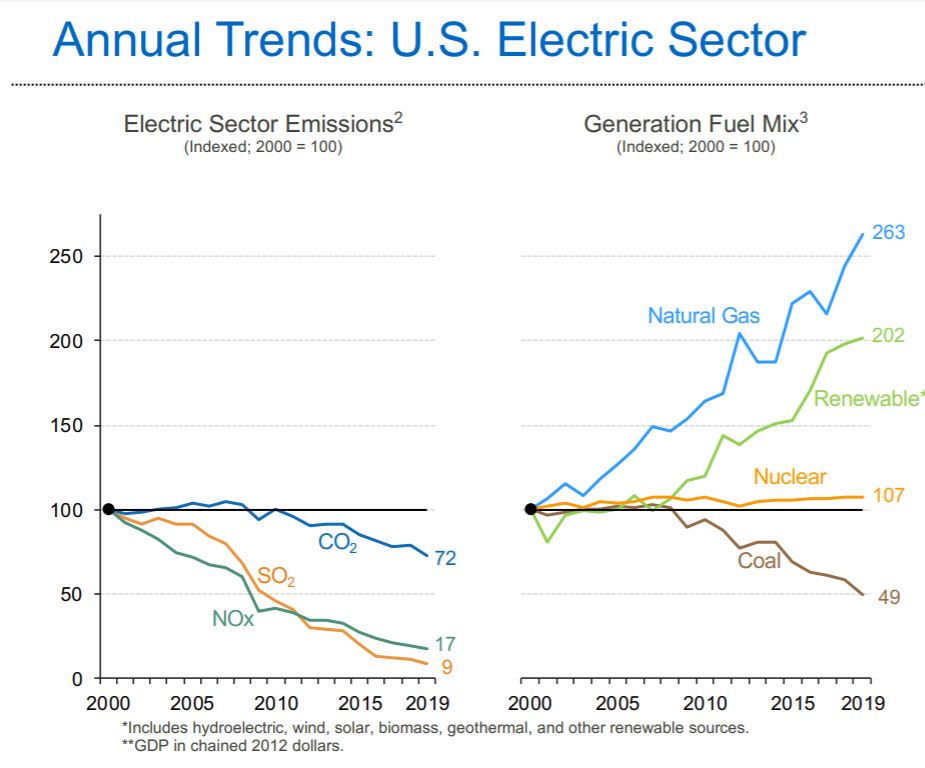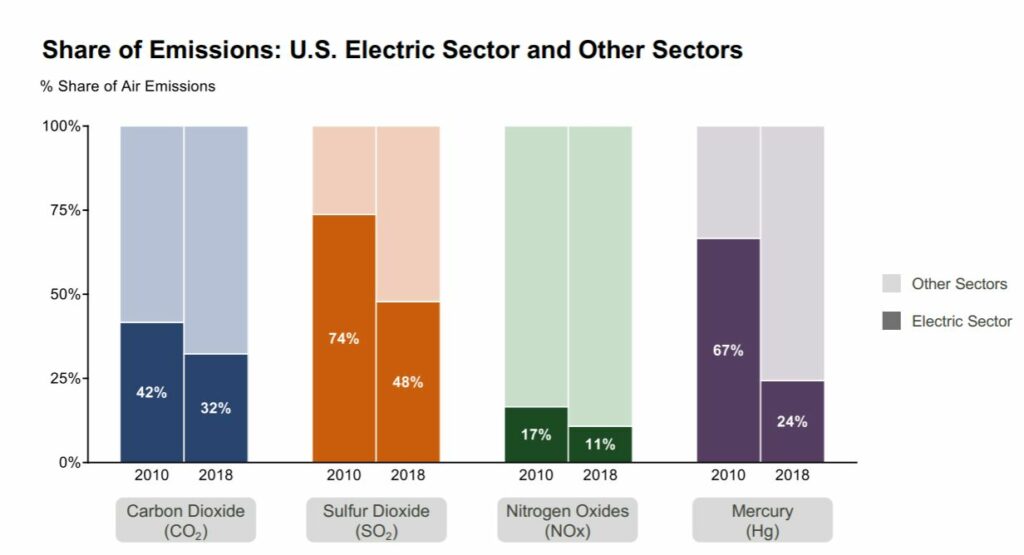As natural gas gains a larger role in our nation’s energy mix, emissions of some of the most prominent greenhouse gasses have plummeted, a new Ceres analysis revealed.
In its latest air emissions benchmarking report, the report co-authored by the Natural Resources Defense Council – an organization that supports a fracking ban – found that the electricity sector has reduced SO2 and NOx emissions by 83% and 91%, respectively, since 1990.
For the electric power sector specifically, the analysis found power plant CO2 emissions are 30% lower than when the U.S. hit its peak emission levels in 2007, and down 11% overall from 1990, even as the economy grew.

The leading factor? Increased use of clean, domestic natural gas in power generation.
Natural gas is the largest fuel source for U.S. power generation, reaching 38% in 2019.
“Some of the factors driving this longer-term trend include energy efficiency improvements and the displacement of coal by natural gas and renewable energy resources,” analysts said in the report.
These trends are similar to what other climate researchers have concluded, such as a spring 2020 report from Carnegie Mellon University’s Scott Institute for Energy Innovation finding an 38% decrease in total power sector emissions intensity over the last 5 years.
In 2018, as natural gas power generation grew by 12%, emission intensity was down 11%, the report found.
Pennsylvania, being the second largest producer of natural gas in the country, has witnessed the environmental advantages of natural gas development directly, as state power sector emissions have declined by 30% since 2005, Pa. DEP data show.

Pennsylvanians benefit from an economic standpoint, too, with capital investments reaching upwards of $13 billion in new natural gas-fueled power generation facilities.
Leveraging our region’s abundance of clean natural gas and skilled workforce, Pennsylvania is perfectly positioned to move our economy forward while simultaneously achieving environmental goals.




